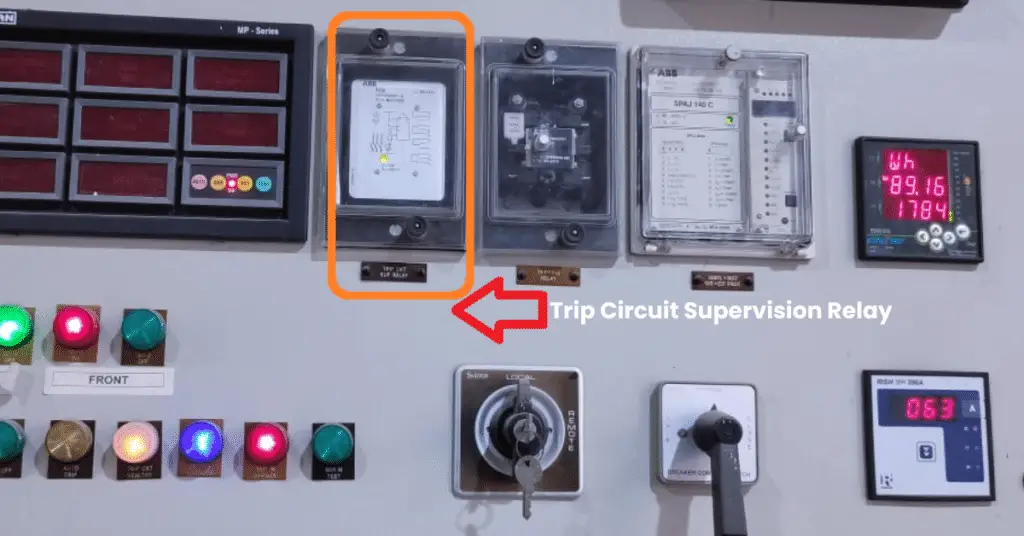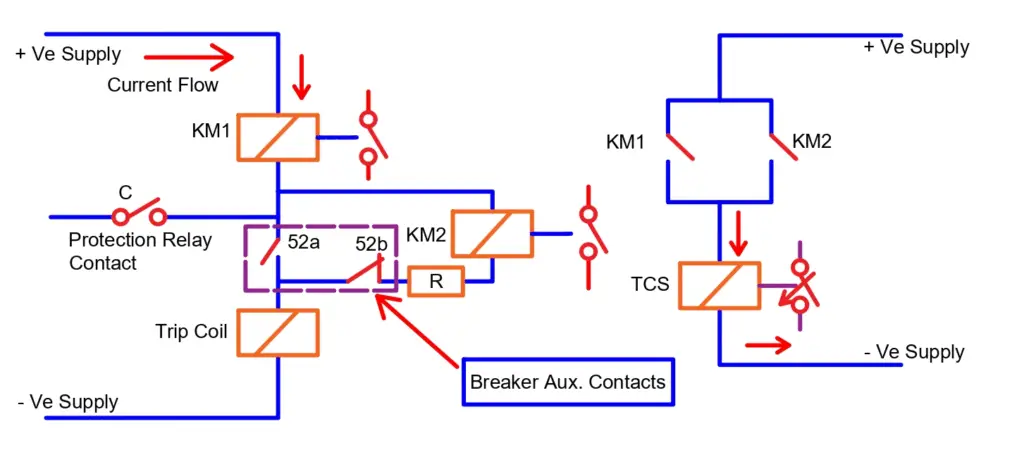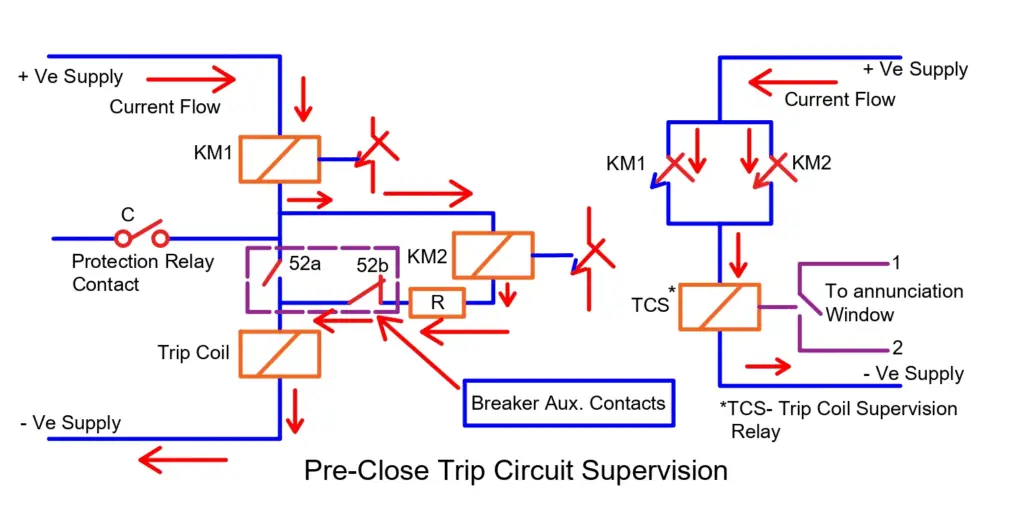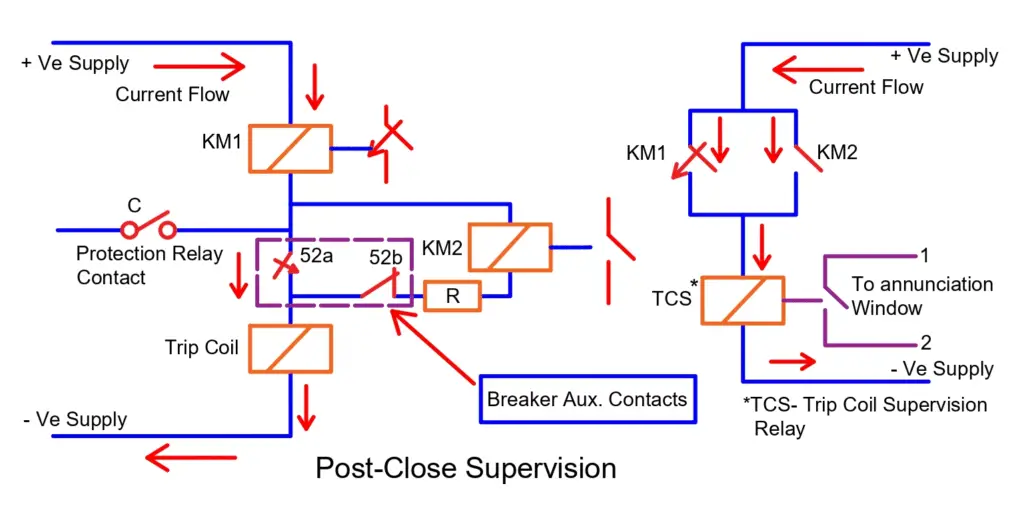Trip circuit supervision monitors and indicates the healthiness of the breaker’s tripping circuit and indicates whether or not the circuit breaker will trip at a fault. If the relay shows a faulty trip circuit, then the user can switch off the breaker at normal load and attend the problem. If not attended and during that time a fault happens in the circuit then the breaker will not trip and it may cause severe damage to the electrical system.
A breaker is used to switch on and switch off the circuit. The breaker must trip in case of a fault in the electrical network. In order to perform the closing, opening, and tripping operation, a breaker has two coils namely the closing coil and the tripping coil. The tripping of the breaker in the event of a fault is a must to safeguard the electrical network and the equipment connected to the outgoing side of the breaker.
The healthiness of the tripping circuit should be always intact to get the tripping of the breaker without fail. The trip circuit supervision of the breaker always checks the healthiness of the breaker’s tripping circuit. The tripping circuit of the breaker has mainly a 110 volts DC tripping coil,110 VDC source, and the 110 VDC to tripping coil connecting wires. If the tripping circuit is healthy the breaker will definitely trip in the case of the fault.

The breaker gets closed if the trip circuit supervision relay outputs its contact. The breaker will not close if there is a fault in the trip circuit. When a breaker is closed and a fault is sensed in running condition, the protection relay senses the fault and issues a trip command to the tripping circuit.
Some breakers have two tripping coils one is operated with 110 VDC and the other is operated with 220 VAC. This is done to ensure the tripping of the breaker in the case of failure of one of the supply systems. Two separate trip circuit supervision circuit is used in this case.
The basic circuit diagram of the trip circuit supervision is given below.

Trip Circuit Supervision Relay Working Function
The trip circuit supervision relay has three coils KM1, KM2, and TCS. To limit the current through KM1 and KM2 relay coils, resistance R is added. The relay monitors the healthiness of the trip circuit in the breaker in closed and open conditions. According to this, the trip circuit supervision function can be divided into two categories.
- Pre-Circuit Trip Circuit Supervision
- Post Close Circuit Supervision
Pre-Close Trip Circuit Supervision
Pre-close means breaker status before closing. The breaker is open in pre-close condition. Thus, the status of breaker contact 52a is open and contact 52b is close. In this condition, current through the trip circuit is as given below.

When a breaker is in open condition, the current does not flow through 52a contact. Current finds its path through breaker auxiliary NC contact, KM2 and KM1. Thus current flowing through KM1 and KM2 energizes both the relay. The positive supply routes through the contact of KM1 and KM2 and energizes the trip coil supervision relay(TCS relay). The NC contact of TCS gets NO and no annunciation window glow in this case. This shows that the trip circuit supervision circuit is healthy.
If both KM1 and KM2 relays do not operate, the TCS relay will not operate, and the contact of TCS will remain in the NC state. The window annunciation will glow in this case and, it shows that either supply is missing or Trip coil is open or there is a defect in the wiring of the trip circuit supervision circuit.
Post Close Trip Circuit Supervision
Post-close means that breaker is closed. The current through the contact 52a and 52b and trip coil is as given below.

Current will flow through the breaker auxiliary contact 52a and trip coil, and the relay KM1 will energize. The NO contact of KM1 will become NC and it will energize the TCS relay. The contact of TCS will get open and the annunciation window shows no fault.
In case of a fault in the supply system, KM1, TRIP COIL, and wiring, the contact of KM1 will remain in an open state and thus the TCS will be inoperative. The NC contact of TCS output the contact to the annunciation window which shows the breaker’s trip circuit is faulty.